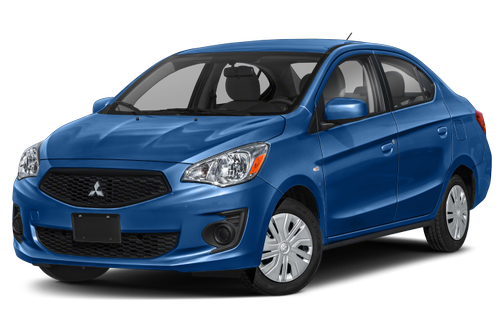Your Desire Adventure Waits For: Discover the Best Lease Deals in Glastonbury
The Ins and Outs of Auto Leasing: A Comprehensive Overview on Exactly How It Functions
From understanding lease terms to computing repayments and exploring end-of-lease choices, there are numerous aspects to take into consideration when contemplating this financial commitment. As customers increasingly opt for renting over typical vehicle possession, it comes to be necessary to decipher the subtleties of this procedure to make enlightened choices.
Advantages of Vehicle Leasing
One substantial benefit is the reduced monthly settlements associated with leasing compared to acquiring a car. Leasing permits individuals to drive a more recent automobile with lower in advance prices and reduced regular monthly settlements since they are just funding the car's devaluation during the lease term, rather than the entire acquisition price.
In addition, car leasing frequently features service warranty insurance coverage throughout of the lease, giving comfort versus unanticipated repair expenses. Given that rented vehicles are usually under the supplier's service warranty throughout the lease term, lessees can stay clear of the financial burden of major repair work. Additionally, leasing might supply tax obligation benefits for local business owner who use the vehicle for company purposes, as lease payments can typically be deducted as an overhead. Generally, the monetary benefits of automobile leasing make it an engaging choice for lots of customers.
Recognizing Lease Terms
Thinking about the financial advantages of vehicle leasing, it is important to grasp the details of lease terms to make educated choices regarding this lorry financing alternative. Lease terms refer to the certain conditions outlined in the leasing agreement in between the lessee (the individual renting the automobile) and the owner (the leasing firm) These terms generally include the lease period, monthly settlement amount, mileage restrictions, wear and tear guidelines, and any kind of potential costs or charges.

Calculating Lease Repayments
Discovering the process of calculating lease repayments clarifies essential financial factors to consider for people taking part in vehicle leasing contracts. Lease settlements are typically identified by thinking about variables such as the lorry's depreciation, the agreed-upon lease term, the cash variable (passion price), and any kind of additional charges. To determine lease settlements, one can use the following formula: Monthly Lease Payment = (Depreciation + Finance Charge) ÷ Number of Months in the Lease Term. The depreciation amount is calculated by identifying the difference between the vehicle's initial value and its recurring worth (its anticipated worth at the end of the lease) The financing charge, which resembles the rate of interest price on a lending, is calculated based upon the cash aspect supplied by the leasing business. It's crucial for lessees to understand exactly how these aspects intertwine to establish their month-to-month lease settlements precisely. By understanding the calculation process, people can make educated decisions when participating in cars and truck leasing contracts, ensuring they remain within their spending plan and economic capacities.
Maintenance and Insurance Factors To Consider
Understanding the upkeep and insurance needs related to cars and truck leasing is essential for lessees to make certain the appropriate care and security of the lorry throughout the lease term. Maintenance obligations differ among leasing arrangements, but lessees are usually expected to maintain the supplier's recommended upkeep timetable. Failure to do so might cause penalties at the end of the lease or space particular guarantees. When essential., lessees ought to keep in-depth documents of all upkeep and fixings to provide proof of compliance.
Regarding insurance, all leased cars have to have extensive and accident insurance coverage with responsibility limitations that fulfill or exceed the renting business's demands. This is to safeguard both the lessee and the leasing firm in instance of a mishap or damage to the vehicle. It is necessary to meticulously examine the insurance policy needs detailed in the lease contract and ensure that the insurance coverage is preserved throughout the lease term. Failure to keep appropriate insurance protection can bring about severe repercussions, consisting of prospective legal concerns and monetary liabilities. By understanding and fulfilling these upkeep and insurance policy responsibilities, lessees can enjoy a smooth leasing experience while guarding the leased vehicle.
End-of-Lease Options and Process
As the end of the lease term strategies, lessees are provided with different alternatives and a defined process for choosing or returning the lorry to go after a various setup. One common option is to just return the lorry to the lessor at the end of the lease term. Lessees are normally in charge of any excess gas mileage fees, damage costs, and any other exceptional repayments as laid out in the lease arrangement.

One more option for lessees is to trade in the leased car for a brand-new lease or purchase. This can be a hassle-free option for those who favor to continuously drive a brand-new lorry without the headache of marketing or returning the current leased vehicle.
Eventually, recognizing the end-of-lease options and process is vital for lessees to make informed decisions that line up with their preferences and needs. New Mitsubishi lease specials Windsor.
Final Thought
In verdict, car leasing provides benefits such as lower month-to-month settlements and the capacity to drive a brand-new vehicle every few years. Understanding lease terms, calculating payments, and considering maintenance and insurance are essential elements of the leasing process. Furthermore, understanding the end-of-lease choices Mitsubishi Outlander lease deals bristol and procedure is necessary for a smooth shift at the end of the lease term. Generally, cars and truck leasing can be a sensible alternative for those looking for adaptability and reduced prices in automobile possession.
Given that leased automobiles are typically under the producer's guarantee throughout the lease term, lessees can avoid the economic burden of major repairs. Lease terms refer to the details problems detailed in the leasing contract between the lessee (the person renting the automobile) and the lessor (the renting company)One critical element of lease terms is the lease duration, which is the size of time the lessee agrees to rent the automobile. Mitsubishi Mirage lease offers Southington. Lease repayments are generally established by thinking about factors such as the car's depreciation, the agreed-upon lease term, the money aspect (rate of interest rate), and any kind of added costs. To compute lease settlements, one can utilize the following formula: Regular monthly Lease Payment = (Depreciation + Money Charge) ÷ Number of Months in the Lease Term